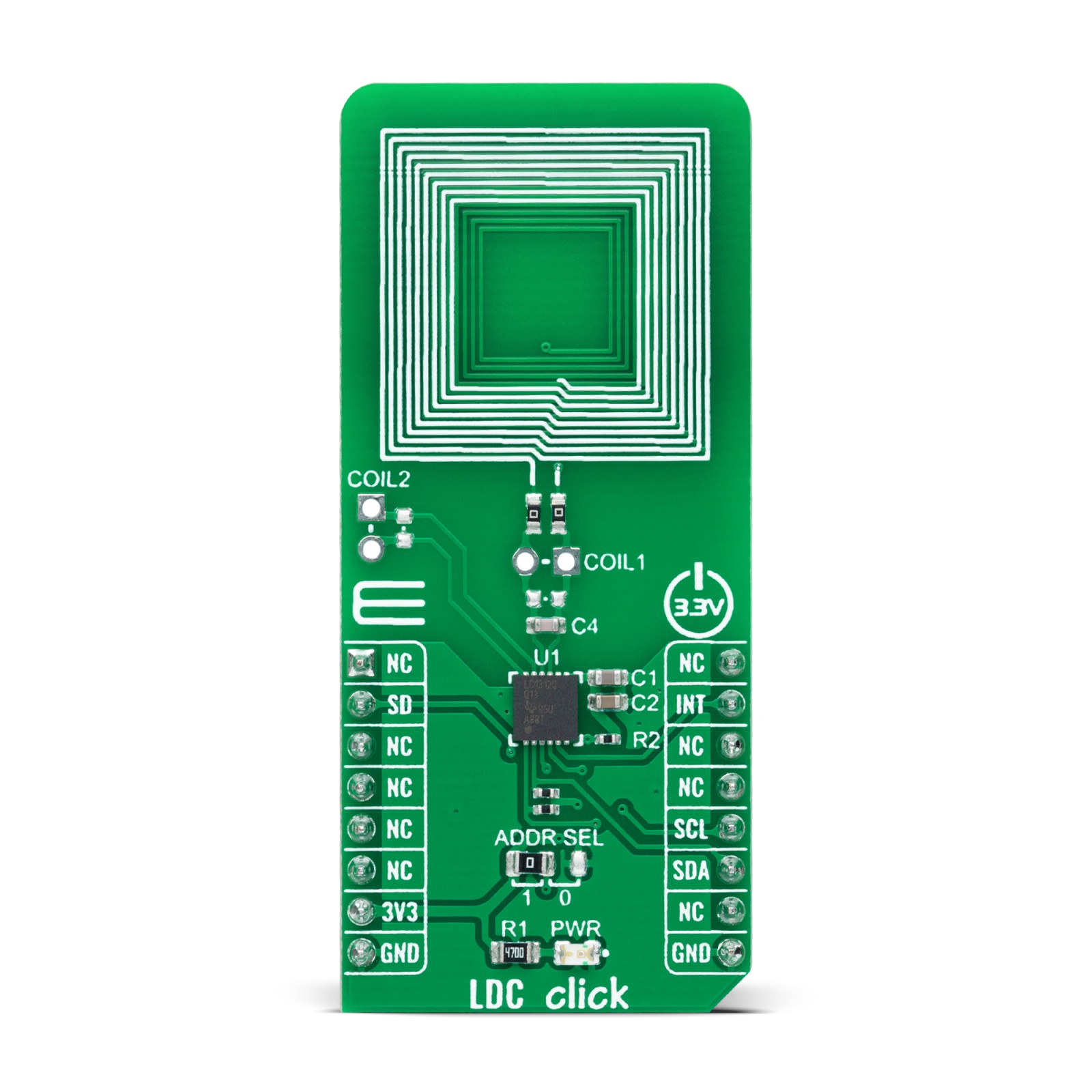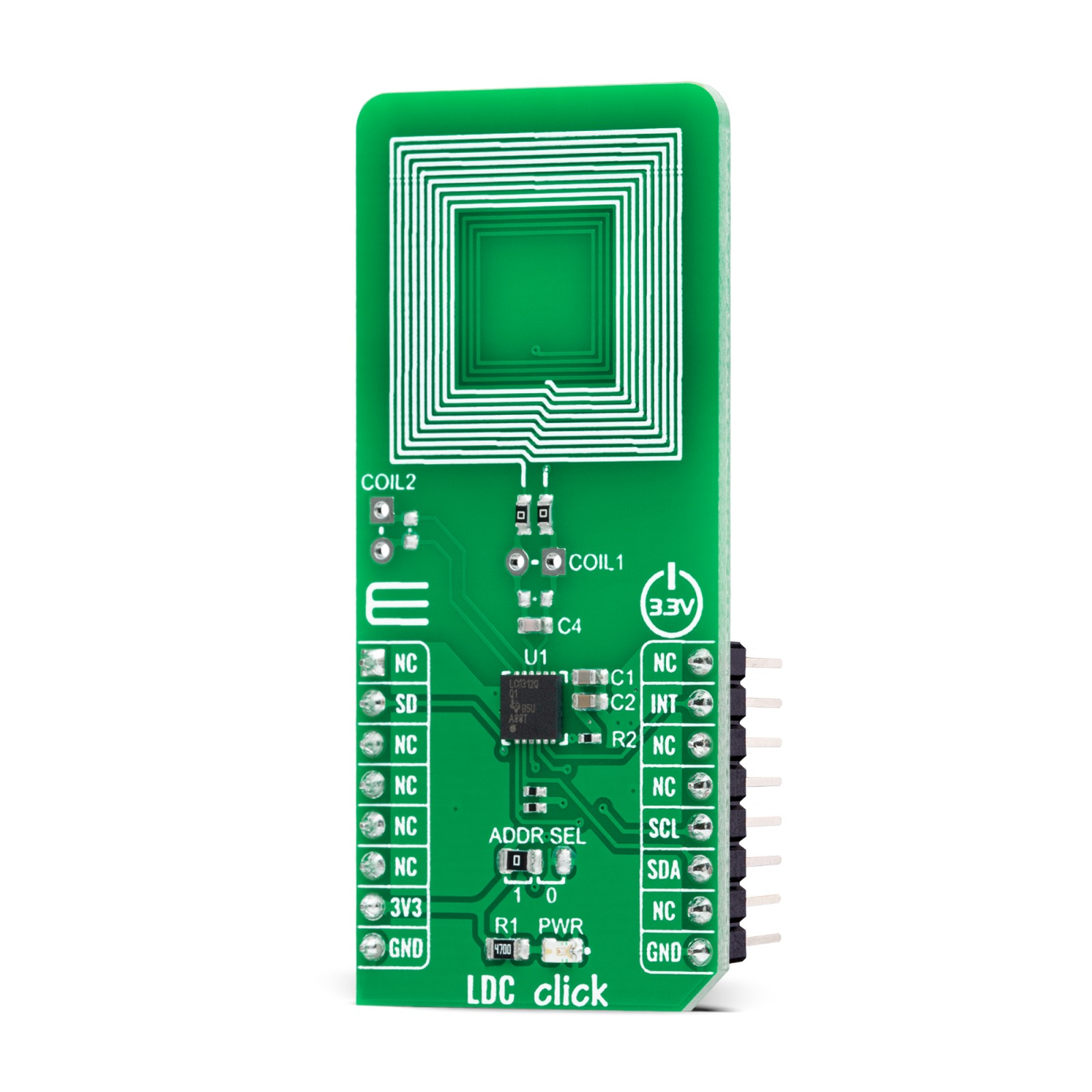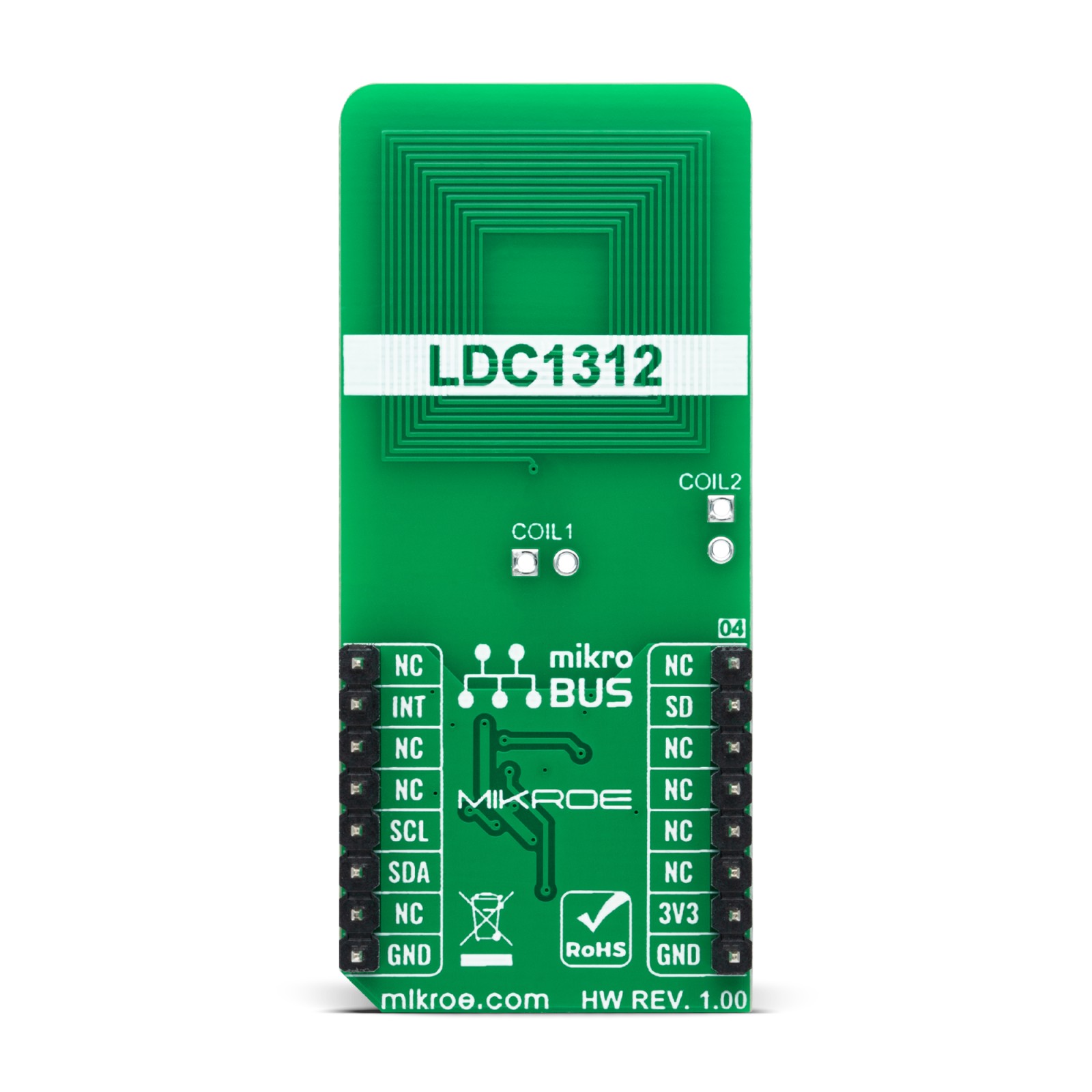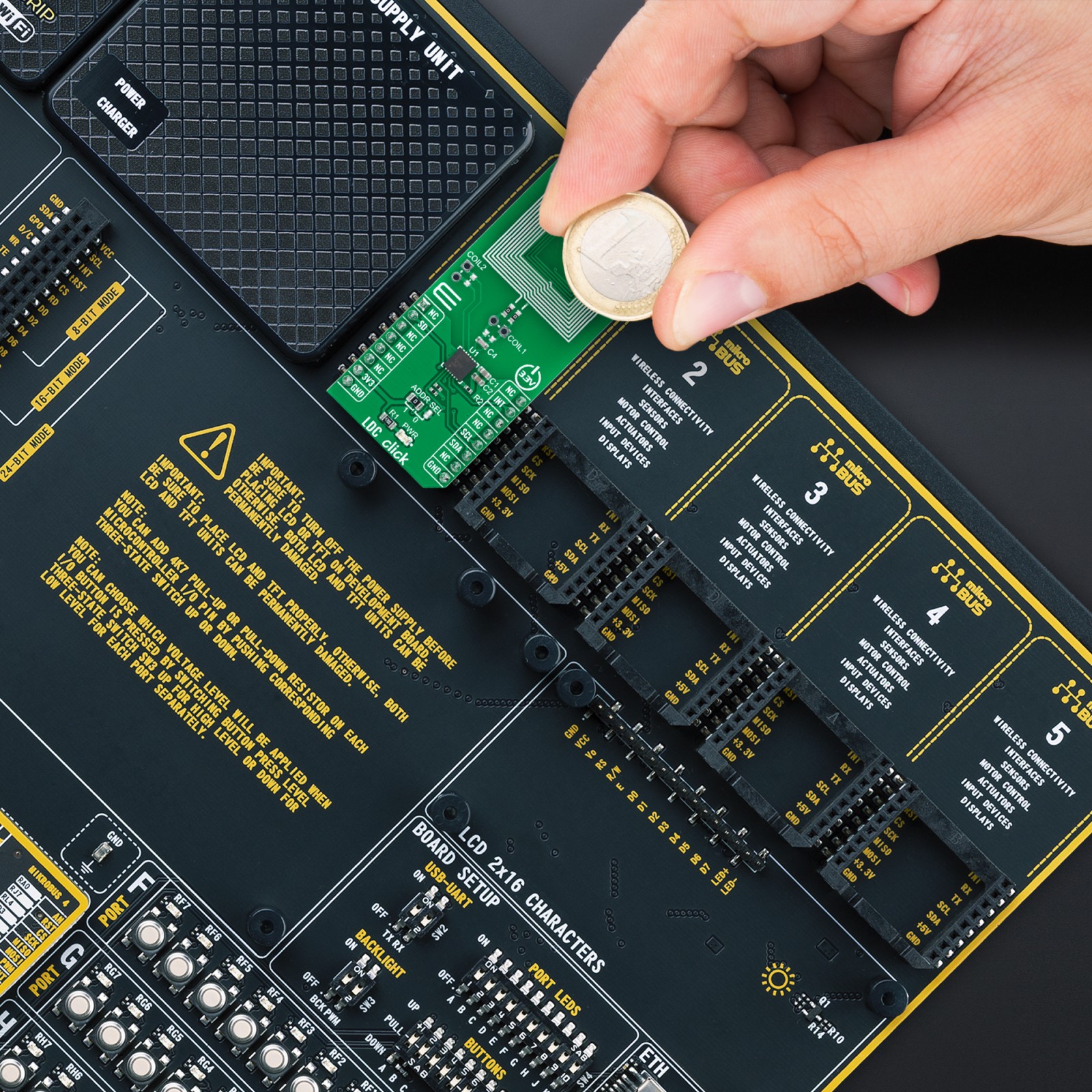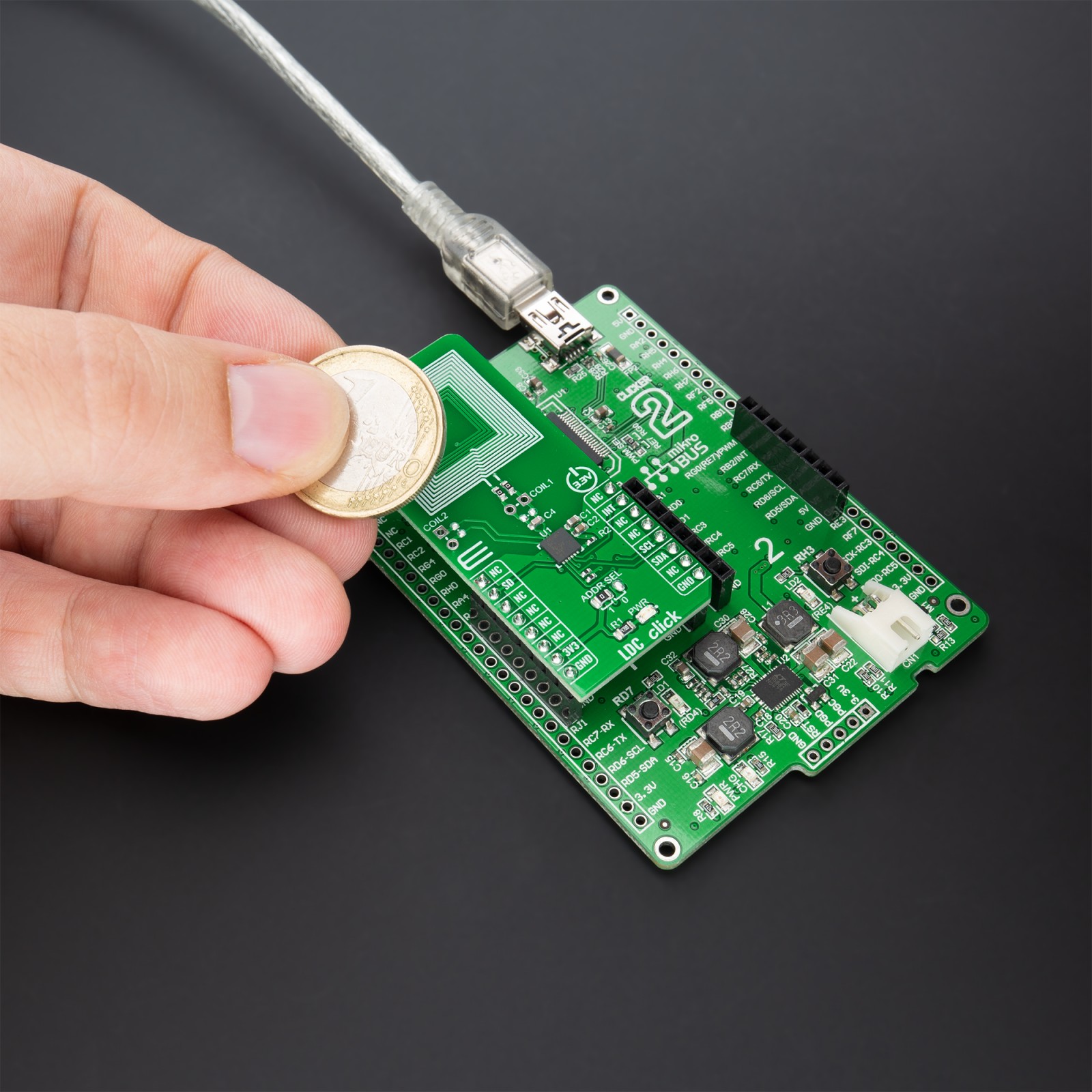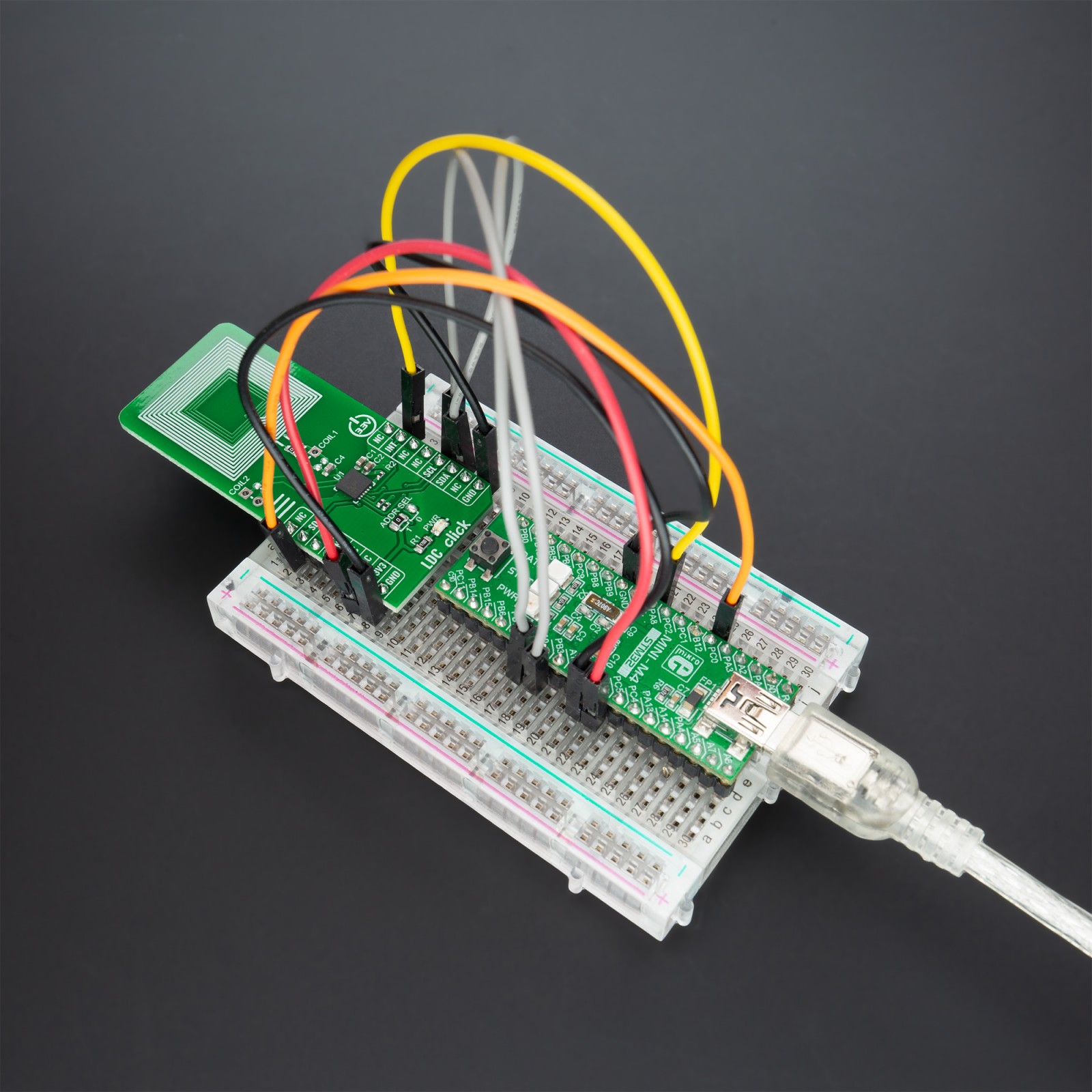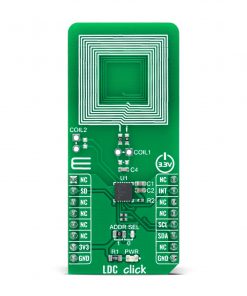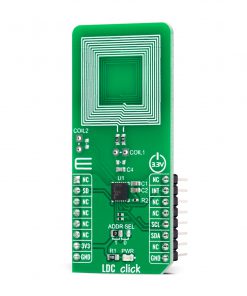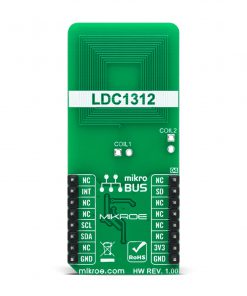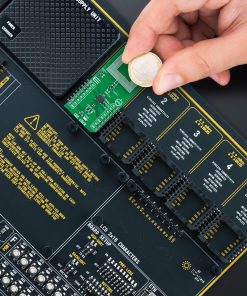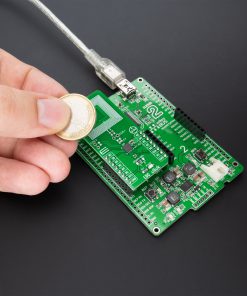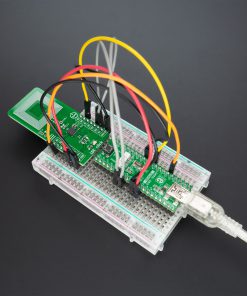LDC Click
R330.00 ex. VAT
LDC Click is a compact add-on board that measures inductance change which a conductive target causes when it moves into the inductor’s AC magnetic field. This board features the LDC1312-Q1, an I2C configurable two-channel, 12-bit inductance to digital converters (LDCs) for inductive sensing solutions from Texas Instruments. This Click board™ is easy-to-use, requiring only the sensor frequency within 1kHz and 10MHz to begin sensing. It has well-matched channels, which allow for differential and ratiometric measurements. Also, it supports remote sensing enabling the performance and reliability benefits of inductive sensing to be realized at minimal cost and power. This Click board™ is suitable for improving significantly existing sensing solutions and introducing brand new sensing capabilities to products in all markets, especially consumer and industrial applications.
LDC Click is supported by a mikroSDK compliant library, which includes functions that simplify software development. This Click board™ comes as a fully tested product, ready to be used on a system equipped with the mikroBUS™ socket.
Stock: Lead-time applicable.
| 5+ | R313.50 |
| 10+ | R297.00 |
| 15+ | R280.50 |
| 20+ | R269.94 |

